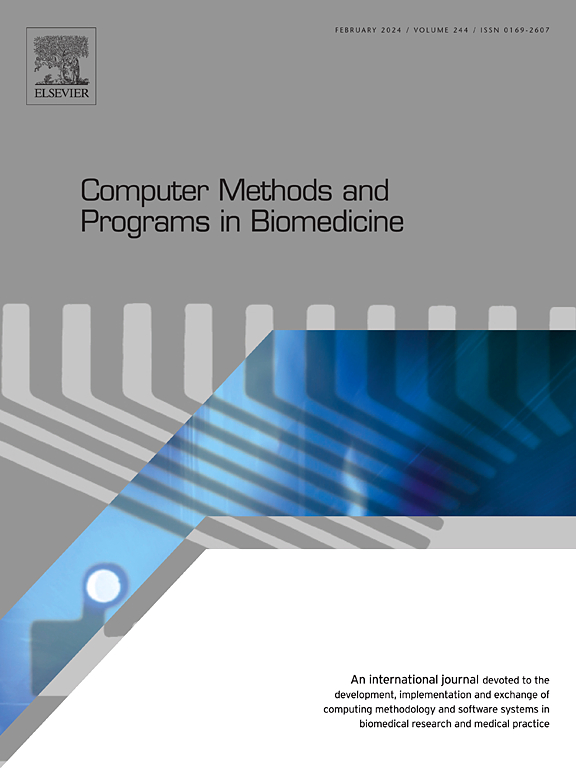Preoperative ECG-assisted feature engineering enhances prediction of new-onset atrial fibrillation after cardiac surgery
IF 4.9
2区 医学
Q1 COMPUTER SCIENCE, INTERDISCIPLINARY APPLICATIONS
引用次数: 0
Abstract
Background
New-onset postoperative atrial fibrillation (POAF) is the most common complication following cardiac surgery, associated with adverse outcomes. However, the predictive accuracy of existing models remains unsatisfactory, primarily due to insufficient utilization of electrocardiogram (ECG) data and limitations in model development methodologies. This study aims to develop an accurate prediction model for POAF by comprehensively analyzing the predictive power of various preoperative ECG features.
Methods
This study enrolled 92 cardiac surgery patients with no prior history of atrial fibrillation (AF). One-minute ECG segments, extracted from preoperative long-term ECG recordings, were analyzed for P-wave and short-term heart rate variability (HRV) characteristics. A total of 39 HRV indices and 9 P-wave indices were calculated as ECG features. Additionally, clinical baseline characteristics were incorporated into a multi-modal risk assessment model. Using various feature combinations, six machine learning classifiers were applied to assess the predictive efficacy of various models. Finally, an ensemble strategy was implemented to enhance the model's prediction performance for POAF.
Results
Statistical analysis revealed significant differences (p < 0.05) in 15 ECG features between patients with POAF and those without, including RR interval unpredictability and the cardiac sympathetic index. The predictive model based solely on clinical baseline characteristics demonstrated high accuracy (78.26 %), sensitivity (78.57 %), and specificity (78.13 %), with superior sensitivity in identifying patients at high risk for POAF compared to existing models. Furthermore, the multi-modal model, which integrated preoperative ECG features and an ensemble machine learning (EML) strategy, demonstrated a significant improvement in prediction performance, with an average accuracy of 81.52 %, sensitivity of 82.14 %, and specificity of 81.25 %.
Conclusion
The integration of P-wave and short-term HRV features holds promise for improving the prediction of new-onset POAF. ECG-assisted analysis is a valuable tool for elucidating the underlying mechanisms of POAF and advancing clinical strategies for its prevention and management.
求助全文
约1分钟内获得全文
求助全文
来源期刊

Computer methods and programs in biomedicine
工程技术-工程:生物医学
CiteScore
12.30
自引率
6.60%
发文量
601
审稿时长
135 days
期刊介绍:
To encourage the development of formal computing methods, and their application in biomedical research and medical practice, by illustration of fundamental principles in biomedical informatics research; to stimulate basic research into application software design; to report the state of research of biomedical information processing projects; to report new computer methodologies applied in biomedical areas; the eventual distribution of demonstrable software to avoid duplication of effort; to provide a forum for discussion and improvement of existing software; to optimize contact between national organizations and regional user groups by promoting an international exchange of information on formal methods, standards and software in biomedicine.
Computer Methods and Programs in Biomedicine covers computing methodology and software systems derived from computing science for implementation in all aspects of biomedical research and medical practice. It is designed to serve: biochemists; biologists; geneticists; immunologists; neuroscientists; pharmacologists; toxicologists; clinicians; epidemiologists; psychiatrists; psychologists; cardiologists; chemists; (radio)physicists; computer scientists; programmers and systems analysts; biomedical, clinical, electrical and other engineers; teachers of medical informatics and users of educational software.
 求助内容:
求助内容: 应助结果提醒方式:
应助结果提醒方式:


